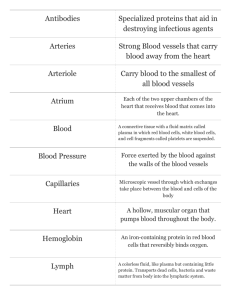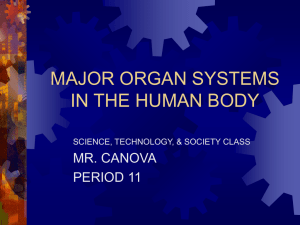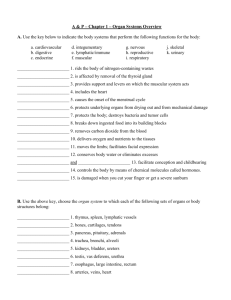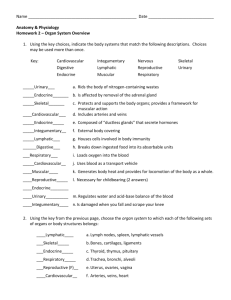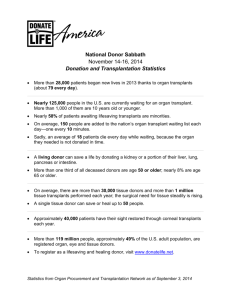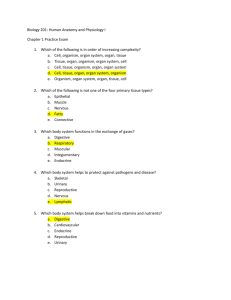Introduction to Organ Systems
advertisement
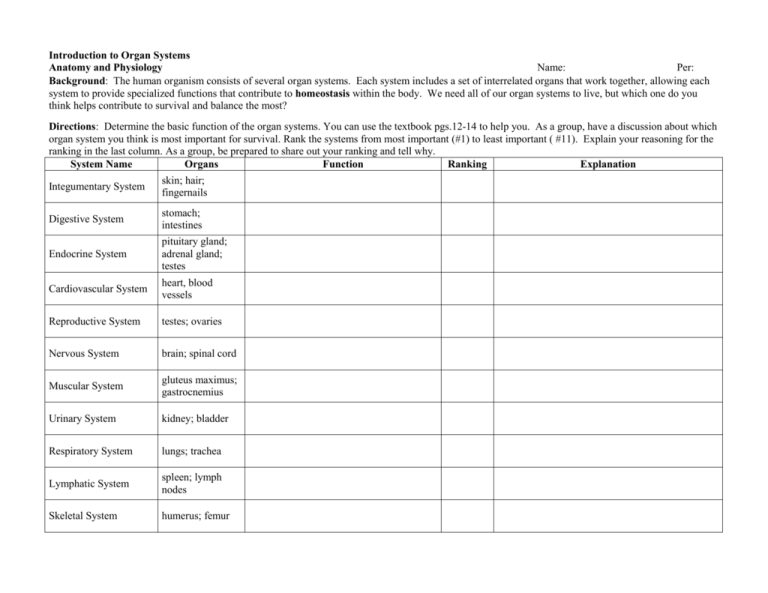
Introduction to Organ Systems Anatomy and Physiology Name: Per: Background: The human organism consists of several organ systems. Each system includes a set of interrelated organs that work together, allowing each system to provide specialized functions that contribute to homeostasis within the body. We need all of our organ systems to live, but which one do you think helps contribute to survival and balance the most? Directions: Determine the basic function of the organ systems. You can use the textbook pgs.12-14 to help you. As a group, have a discussion about which organ system you think is most important for survival. Rank the systems from most important (#1) to least important ( #11). Explain your reasoning for the ranking in the last column. As a group, be prepared to share out your ranking and tell why. System Name Organs Function Ranking Explanation Integumentary System skin; hair; fingernails Digestive System stomach; intestines Endocrine System pituitary gland; adrenal gland; testes Cardiovascular System heart, blood vessels Reproductive System testes; ovaries Nervous System brain; spinal cord Muscular System gluteus maximus; gastrocnemius Urinary System kidney; bladder Respiratory System lungs; trachea Lymphatic System spleen; lymph nodes Skeletal System humerus; femur Organ Systems On a separate sheet of paper, use the following terms to create a concept map of the organ systems. In between boxes (the terms used below) you should include connecting terminology that allows you to know how the terms you are connecting relate. Include below are the systems, their structures and their functions. Organ systems Integumentary system Respiratory system Muscles Absorption and excretion Skeletal system Urinary system Nerves and brain Body coverings Muscular system Adrenals and pancreas Support and movement Nervous system Lymph node and lymph vessels Lungs and trachea Integration and coordination Endocrine system Stomach and intestines Bladder and kidneys Transport Cardiovascular system Ovaries and testes Reproduction Lymphatic system Skin Digestive system Reproductive system Bones Heart and blood vessels

